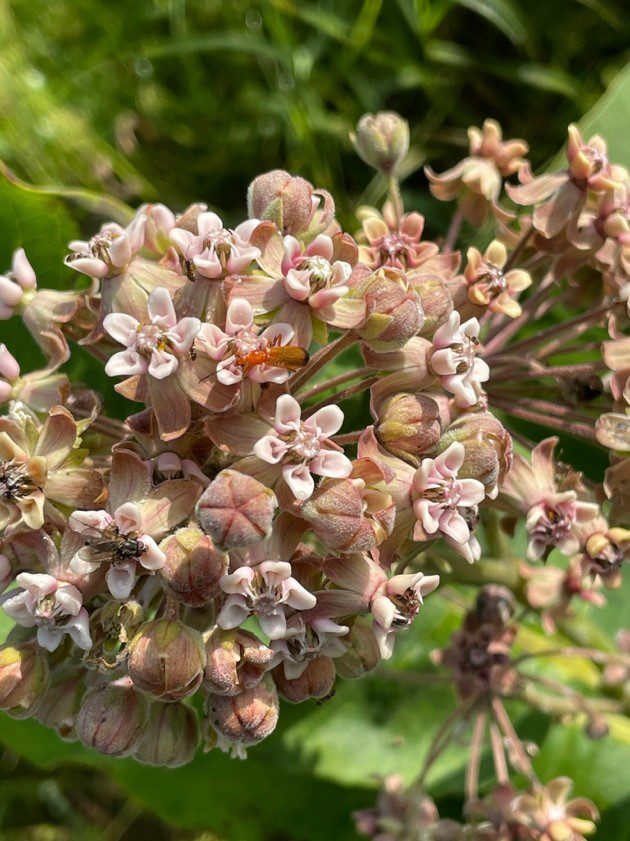Bruce Trail Botany – month by month - Part 2!
Last month our Land Steward Coordinator & Ecologist Mara McHaffie took us along the Bruce Trail Botany month by month and we ended at the month of June. If you missed that posting, you can read it here.
We pick up from the month of July:
In July, I love to take the time to peer closely at Common Milkweed, like this plant found in the Caledon Hills section. Most people know that milkweed is the host plant for Monarch caterpillars, but its leaves, nectar and pollen also support tons of other critters, like the Common Red Soldier Beetle in the middle of this photo. How many other insects can you spot in this photo? Make sure you take a look at your local milkweed patch next summer to see what kinds of bugs you can find!

July: Common Milkweed (Asclepias syriaca)
While I wasn’t exactly happy to observe this invasive Japanese Stiltgrass, I was glad I could document it using iNaturalist! There are very few occurrences of this species in Canada at the moment, but there is a large population at Short Hills Provincial Park, which hosts a portion of the Bruce Trail. Unfortunately, in recent years, it has started to spread outside the park along the edges of the Trail. I have been documenting new patches of it using iNaturalist, and I encourage you to do the same if you’re in this area! Adding your observations to this iNaturalist project allows us to act quickly to remove new patches where they pop up, containing the spread. The silvery vein in the middle of the leaf is a distinct feature you can use to identify this grass.

August: Japanese Stiltgrass (Microstegium vimineum)
For many, September signifies the start of the fall season, but for botanists, it’s aster and goldenrod season! Many plants in the aster family bloom in the fall, providing a beautiful end-of-summer display and much needed resources for pollinators. However, for the beginner botanist, the many similar-looking species of asters can lead to a season of frustration! If you’re attempting to identify a plant from this group, make sure you take several photos of the flowers, leaves, stem, base and habitat so you can work your way through an ID key or get help from others in the iNaturalist community. This beautiful Swamp Aster likes wet habitats and has light purple rays, a hairy purplish stem, and leaves that are hairy underneath.

September: Swamp Aster (Symphyotrichum puniceum)This October did not disappoint, with a beautiful show of fall colours to enjoy! In the Niagara section, the Northern Spicebush (another Carolinian species) was putting on a show with mottled yellow leaves and bright red berries (you can spot one in the center of this photo). True to its name, spicebush emits a lovely citrus-y aroma when the leaves are rubbed. Try the scratch-and-sniff for yourself next time you see this plant!

October: Northern Spicebush (Lindera benzoin)November and December…still to come! Can’t wait to see what I find!
I hope you enjoyed this twiggy tour through time along the Trail! I must say, having an observation goal to work towards that kept me active in every season has been extremely rewarding. I encourage you to try it for yourself – whether it’s a plant a day, a bird of the month, or your own unique challenge, have fun and make sure you share your observations with us!
One way to aovid missing our Journal Posts is to get it sent directly in your email inbox:
1) Join the Bruce Trail Conservancy's iNaturalist Project, AND
2) Check "Project Journal Posts" under your iNaturalist Account Settings > Notifications > Email Notifications.
Thank you for your interest in the Bruce Trail Conservancy and our work to preserve a ribbon of wilderness, for everyone, forever.




